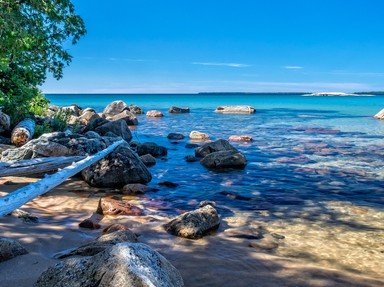Quiz Answer Key and Fun Facts
1. Which of the Great Lakes has the largest surface area?
2. Which is the shallowest of the Great Lakes?
3. Approximately how much of the world's fresh water is located in the Great Lakes system?
4. One of the features of the Great Lakes was the ability to access the lakes from ocean ports in the 19th century. In the 20th Century, ocean going ships could directly access the lakes. Which one of the following canal systems is/was not connected to the Great Lakes?
5. The Great Lakes is one of only a handful of areas in the world that creates lake effect snow. South Bend Indiana is one of these areas.
6. Which is the only one of the Great Lakes entirely within the United States borders?
7. Which is the deepest of the Great Lakes?
8. What small lake is located between Lake Huron and Lake Erie?
9. The iron ore freighter Edmund Fitzgerald, which sunk on November 10, 1975, is one of the most famous wrecks in Great Lakes history. In which lake did she founder?
10. The Great Lakes have such a profound effect on weather patterns that they have actually been known to cause cyclones to form. Over which lake did a freak subtropical cyclone form in September 1996?
Source: Author
Maiguy
This quiz was reviewed by FunTrivia editor
minch before going online.
Any errors found in FunTrivia content are routinely corrected through our feedback system.

